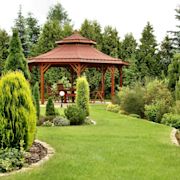Search results
Transylvania (Romanian: Transilvania or Ardeal; Hungarian: Erdély; German: Siebenbürgen or Transsilvanien, historically Überwald, also Siweberjen in the Transylvanian Saxon dialect) is a historical and cultural region in Central Europe, encompassing central Romania.
Transylvania, historic eastern European region, now in Romania. After forming part of Hungary in the 11th–16th centuries, it was an autonomous principality within the Ottoman Empire (16th–17th century) and then once again became part of Hungary at the end of the 17th century.
- The Editors of Encyclopaedia Britannica
- Dracula is real (sort of) Bram Stoker’s 1897 vampire novel was inspired by centuries-old superstition and the real-life exploits of Vlad Dracula. Known by his murderous moniker, Vlad Ţepeş (the Impaler), the 15th-century Wallachian nobleman was said to have skewered up to 80,000 enemies on long spikes.
- It’s like stepping back in time. While it’s hard to avoid the creepy count, you’ll also find hardwood forests, lush pastures and wildflower meadows. Travelling around Transylvania, described as ‘the last truly medieval landscape in Europe’, feels like you’ve gone back 100 years.
- A Hungarian phrasebook comes in handy. Tongue-twisting Hungarian is the default language in eastern Transylvania. It’s also widely spoken in cities such as Miercurea-Ciuc, Târgu Mureş and Cluj-Napoca and the counties of Covasna and Harghita.
- The Saxons made their mark. German merchants arrived in the 12th century to help defend the region against the Tatars and Turks. Over the next few centuries, they built seven fortress towns, known as the Siebenbürgen, and hundreds of fortified churches.
Transylvania is a historical region in central and northwestern Romania. It was under the rule of the Agathyrsi, part of the Dacian Kingdom (168 BC–106 AD), Roman Dacia (106–271), the Goths, the Hunnic Empire (4th–5th centuries), the Kingdom of the Gepids (5th–6th centuries), the Avar Khaganate (6th–9th centuries), the Slavs, and the ...
Transylvania is a historical and cultural region in Central Europe, encompassing central Romania. To the east and south its natural border is the Carpathian Mountains and to the west the Apuseni Mountains.
Explore Transylvania's forested valleys, Gothic castles and dark fairy-tales with Lonely Planet. Find attractions, articles, guidebooks and activities for your trip to this land of fog and mystery.
Transylvania is the largest region of Romania and probably the best known one. When you visit Transylvania you dive into a mix of cultures, nature and history. Transylvania is a diverse region: it is worth trying to observe the differences that exist within the region, both culturally and naturally.




